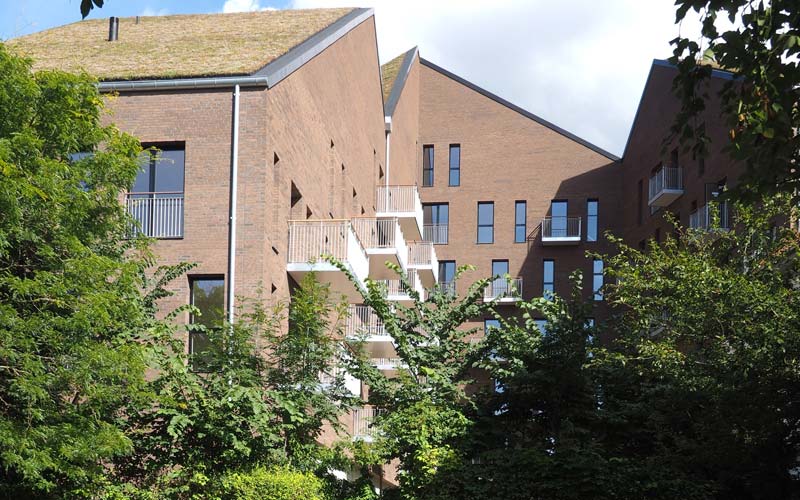
24. February 2021
BIM, Building Information Modelling, or simply digitalization of the construction industry, is known for providing major savings for the entire construction value chain both financially and through increased productivity and time savings. But BIM is much more than that. Digitalization and a new way of using data form the basis for the green transition in the construction industry.
“BIM and the way we use data must help drive the green transition in construction. If we are to live up to the national ambition of a significant reduction in CO2 emissions and optimal recycling of building materials, there is a need for construction to be digitalized and data-driven to a much greater extent than it is today - also in the construction and operation phases”, says Oliver Saltoft, consultant at Dansk Standard.
For example, we need to know the energy consumption and the CO2 footprint in order to know the content of the individual building materials if we want to construct in a sustainable way. Here, the international standards for BIM play a significant role. They form the basis for a common digital collaboration model across the entire construction industry and help provide the data we need to strengthen a circular and green transition.
However, there is a need for a collaborative Danish approach to the implementation and further development of BIM standards. Therefore, as part of the initiatives to further a sustainable development, and in collaboration with Molio, Danish Standards has initiated the work of bringing together the Danish construction industry around a joint Danish action plan for how we implement the BIM standards in the best way possible. In doing so we act on the request of all organizations in the industry and aim at a successful implementation of the BIM standards.
“We have just started the work of finding out which data the various actors in the value chain need. This means clarifying the needs and wishes of the Danish value chain in order to prepare a national action plan that will help fulfill the potential of the BIM standards for both the individual organizations and the entire construction industry", says Oliver Saltoft and emphasizes that this work should go hand in hand with the ongoing endeavor to develop a common building and material passport to ensure control over the components of our buildings.
The international BIM standards will function as a tool for organizing the collaboration across the construction value chain and for ensuring data exchange management between all parties involved. In addition, the standards provide a common language and common concepts that can facilitate communication and digital collaboration, and according to Oliver, they will become a common frame of reference throughout the European construction industry:
“The standards will leave a footprint on the digitalization of construction throughout Europe. They will constitute a common European language that all parties will use, and the Danish construction industry needs to get on board from the beginning,” says Oliver Saltoft and continues:
“We are pleased to see that the entire industry is involved in the work on an action plan for deciding which standards should be implemented and for ensuring that this results in concrete and useful standards. This development may take us to a completely new level of digital collaboration in the Danish construction industry”.
In order to strengthen the green transition, we need the future for the construction industry to be more digital and data-driven in the construction as well as in the operation phase. Therefore, there is a need for standards that help provide data that allow us to further the green transition, e.g., in relation to energy consumption and CO2 footprint, the energy consumption embedded in building materials, the content of the materials used, possibilities for substitution, etc. The BIM standards can be a part of the solution.
These standards provide answers to questions such as how to agree on who should receive which data in a construction project, how to specify a data delivery between the parties involved in a construction project, or how to specify and use product data in tenders and during operation. In addition, there are also standards for, for example, which data format to use internationally.
In the BIM field, 46 international standards have been published, are under development, or have been proposed.
The international BIM standards greatly affect national digital working methods and processes as well as contract agreement practices in Denmark.
